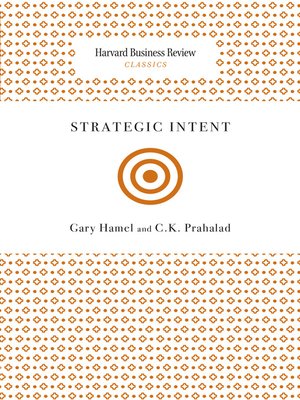
Sign up to save your library
With an OverDrive account, you can save your favorite libraries for at-a-glance information about availability. Find out more about OverDrive accounts.
Find this title in Libby, the library reading app by OverDrive.



Search for a digital library with this title
Title found at these libraries:
| Library Name | Distance |
|---|---|
| Loading... |
In this McKinsey Award-winning article, first published in May 1989, Gary Hamel and C.K. Prahalad explain that Western companies have wasted too much time and energy replicating the cost and quality advantages their global competitors already experience. Canon and other world-class competitors have taken a different approach to strategy: one of strategic intent. They begin with a goal that exceeds the company's present grasp and existing resources: "Beat Xerox"; "encircle Caterpillar." Then they rally the organization to close the gap by setting challenges that focus employees' efforts in the near to medium term: "Build a personal copier to sell for $1,000"; "cut product development time by 75%." Year after year, they emphasize competitive innovation—building a portfolio of competitive advantages; searching markets for "loose bricks" that rivals have left underdefended; changing the terms of competitive engagement to avoid playing by the leader's rules. The result is a global leadership position and an approach to competition that has reduced larger, stronger Western rivals to playing an endless game of catch-up.







